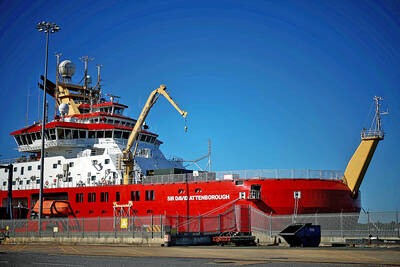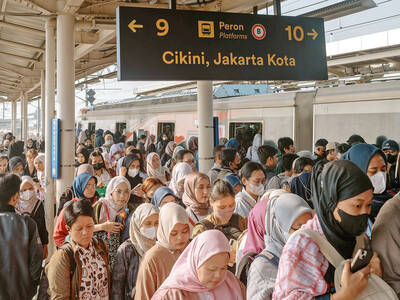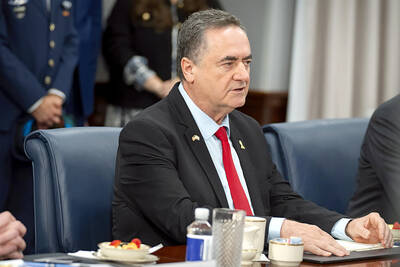A passenger plane overshot a runway and raced onto a busy street in the Honduran capital on Friday, killing the pilot, two passengers and a motorist on the ground. At least 65 people were injured.
The Grupo Taca Airbus A320 with 140 people on board was flying a Los Angeles-San Salvador-Tegucigalpa route and was scheduled to head on to Miami, Florida. It ended with its nose smashed against a roadside embankment and its fuselage buckled and broken in places.
Honduran authorities frantically hosed down cars trapped beneath the wreckage as thousands of liters of fuel gushed from the jet.
Rescuers pried open part of the wreckage to get the pilot and co-pilot out, but the pilot didn’t survive, said Cesar Villalta, director of Honduras’ military hospital.
Passenger Harry Brautigam, a Nicaraguan who headed a regional development bank, died of heart failure. The body of a man trapped under the wreckage was believed to be a taxi driver.
Janneth Shantall, the wife of Brazilian Ambassador Brian Michael Fraser Neele, was also killed in the crash. The former head of Honduras’ armed forces, General Daniel Lopez Carballo, was also among the injured.
A statement from the office of Honduran President Manuel Zelaya said the flight originated in Los Angeles and that 65 people were injured in crash. Taca spokeswoman Sofia Valverde said the flight had been scheduled to continue on to Miami.
Following the crash, officials acknowledged that the runways of Tegucigalpa’s aging Toncontin International Airport are short and its approach paths are dangerous. The airport is ringed by hills, posing a special challenge for pilots.
There was no official cause given for the crash, but weather may have also been a factor. The runway was wet with rain from Tropical Storm Alma.
“The plane inexplicably circled the city twice and it ran out of runway because it landed more than halfway down’’ the length of the strip, airport manager Carlos Ramos told the Channel 7 television network.
The plane “didn’t touch down were they normally do, at the start of the runway ... and that is being investigated,” Ramos said.
Many passengers walked away from the accident.
Mirtila Lopez, 71, said she was talking to another passenger when the plane “left the runway, hit electric cables from a nearby street and then got stuck in the side of a small ravine.”
Taca released a statement saying that 60 of the passengers were from Honduras, 17 from Costa Rica, and nine from Argentina. There were seven Americans, three Mexicans, two Spaniards, two Brazilians and two Colombians aboard. Almost all the remainder were from other Central American countries.
Honduran air officials said they would close the terminal to large jets and permanently transfer those flights to the former military airfield at Palmerola.
Larger jets will now operate out of Palmerola, also known as the Soto Cano base, about 45km north of the capital.
Used by the US during the Central American civil wars of the 1980s, Palmerola has the best runway in the country, at 2,700m long and 50m wide, and is used most for drug surveillance planes.
There have been calls for years to replace the aging Toncontin airport, whose short runway, primitive navigation equipment and neighboring hills make it one of the world’s more dangerous international airports.

STEPPING UP: Diminished US polar science presence mean opportunities for the UK and other countries, although China or Russia might also fill that gap, a researcher said The UK’s flagship polar research vessel is to head to Antarctica next week to help advance dozens of climate change-linked science projects, as Western nations spearhead studies there while the US withdraws. The RRS Sir David Attenborough, a state-of-the-art ship named after the renowned British naturalist, would aid research on everything from “hunting underwater tsunamis” to tracking glacier melt and whale populations. Operated by the British Antarctic Survey (BAS), the country’s polar research institute, the 15,000-tonne icebreaker — boasting a helipad, and various laboratories and gadgetry — is pivotal to the UK’s efforts to assess climate change’s impact there. “The saying goes

FRUSTRATIONS: One in seven youths in China and Indonesia are unemployed, and many in the region are stuck in low-productivity jobs, the World Bank said Young people across Asia are struggling to find good jobs, with many stuck in low-productivity work that the World Bank said could strain social stability as frustrations fuel a global wave of youth-led protests. The bank highlighted a persistent gap between younger and more experienced workers across several Asian economies in a regional economic update released yesterday, noting that one in seven young people in China and Indonesia are unemployed. The share of people now vulnerable to falling into poverty is now larger than the middle class in most countries, it said. “The employment rate is generally high, but the young struggle to

ENERGY SHIFT: A report by Ember suggests it is possible for the world to wean off polluting sources of power, such as coal and gas, even as demand for electricity surges Worldwide solar and wind power generation has outpaced electricity demand this year, and for the first time on record, renewable energies combined generated more power than coal, a new analysis said. Global solar generation grew by a record 31 percent in the first half of the year, while wind generation grew 7.7 percent, according to the report by the energy think tank Ember, which was released after midnight yesterday. Solar and wind generation combined grew by more than 400 terawatt hours, which was more than the increase in overall global demand during the same period, it said. The findings suggest it is

FIRST STAGE: Hamas has agreed to release 48 Israeli hostages in exchange for 250 ‘national security prisoners’ as well as 1,700 Gazans, but has resisted calls to disarm Israel plans to destroy what remains of Hamas’ network of tunnels under Gaza, working with US approval after its hostages are freed, it said yesterday. Israeli Minister of Defense Israel Katz said that the operation would be conducted under an “international mechanism” led by the US. “Israel’s great challenge after the hostage release phase will be the destruction of all Hamas terrorist tunnels in Gaza,” Katz said. “I have ordered the army to prepare to carry out this mission,” he added. Hamas operates a network of tunnels under Gaza, allowing its fighters to operate out of sight of Israeli reconnaissance. Some have passed under